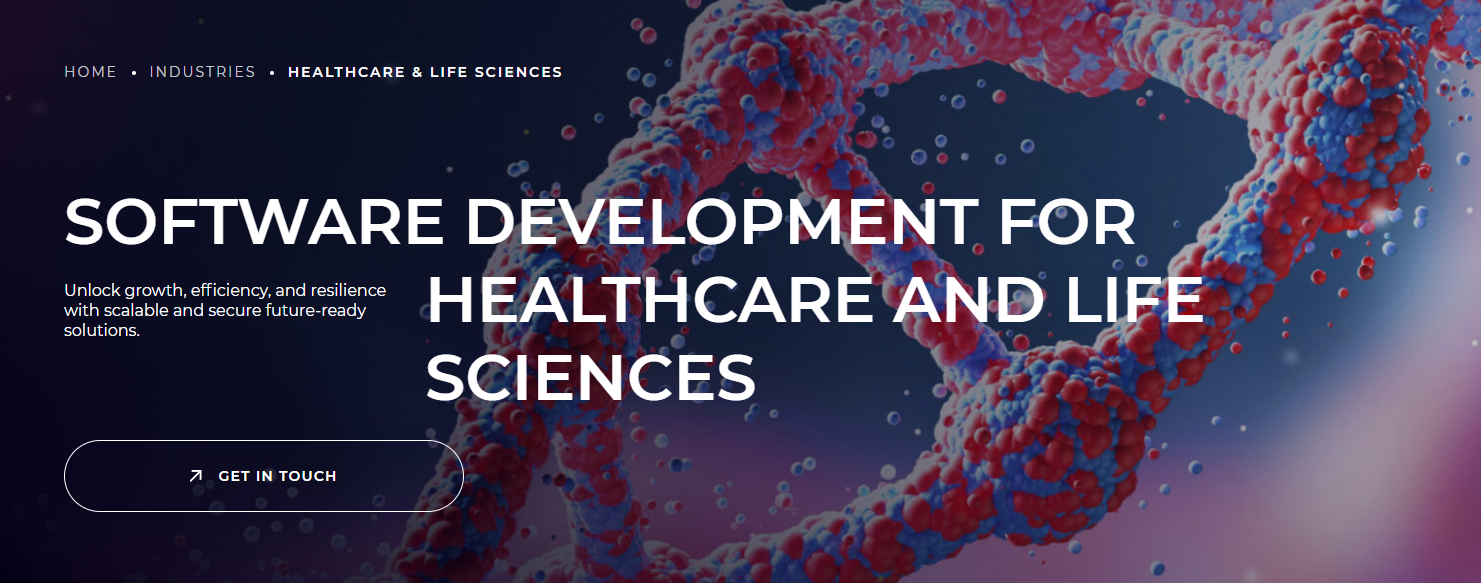In today’s competitive digital world, businesses are under constant pressure to innovate, scale, and deliver exceptional customer experiences. Software plays a central role in achieving these goals — but developing software that truly aligns with business objectives requires more than just writing code. It demands a comprehensive, unified approach that covers every stage of the product lifecycle. This is where end-to-end software development comes into play.
This methodology ensures that every element — from initial research to deployment and maintenance — is handled by one cohesive team. The result is a streamlined, efficient process that produces high-quality products with faster time-to-market and better alignment between business and technology goals.
What Is End-to-End Software Development?
End-to-end software development refers to the process of managing the entire software creation journey within a single framework or by one provider. It includes all stages of development: concept, planning, design, coding, testing, deployment, and maintenance. The goal is to deliver a complete, ready-to-use product that fulfills all functional and business requirements.
This holistic approach eliminates the inefficiencies of fragmented workflows. Instead of outsourcing different phases to multiple vendors, companies rely on one trusted partner or an integrated in-house team. This ensures consistency, accountability, and seamless communication across all stages of the project.
In simple terms, end-to-end development means owning the entire lifecycle of a software product — from idea to implementation and beyond.
Key Stages of the End-to-End Development Process
Let’s take a closer look at each stage involved in the end-to-end software development process and why each step is critical to success.
1. Discovery and Requirement Analysis
Every great product starts with a clear understanding of the problem it’s meant to solve. During this phase, business analysts, project managers, and stakeholders collaborate to define:
Business objectives and challenges
User personas and market needs
Functional and non-functional requirements
Key performance indicators (KPIs)
Budget and timeline estimates
This step sets the foundation for the entire project, aligning the technical vision with strategic goals.
2. Planning and Architecture Design
Once the requirements are gathered, the technical team designs a robust software architecture. This blueprint defines how the system will function, scale, and interact with other technologies. Decisions made during this stage include:
Technology stack selection (programming languages, frameworks, tools)
Data flow and storage models
Integration and API structure
Cloud and infrastructure setup
The goal is to ensure scalability, security, and maintainability from the very beginning.
3. UI/UX Design
User experience (UX) plays a pivotal role in product success. The design team creates intuitive interfaces that reflect the brand identity and support user needs. The process typically includes:
Wireframing and prototyping
Visual design and interaction flow
Usability testing and user feedback
Good design ensures that the product is not only visually appealing but also functional, accessible, and enjoyable to use.
4. Development and Implementation
This is the heart of end-to-end software development. In this phase, the design turns into a fully functional product. Development is usually divided into two main areas:
Frontend development: Responsible for everything users see and interact with — the interface, navigation, and responsiveness.
Backend development: Manages the logic, database interactions, and server-side operations that power the application.
Most modern teams use Agile or Scrum methodologies to deliver incremental updates, ensuring flexibility and faster feedback loops.
5. Quality Assurance and Testing
Before a product can go live, it must undergo rigorous testing to ensure performance, functionality, and security. The QA process may include:
Unit and integration testing
Functional testing
Regression testing
Load and performance testing
User acceptance testing (UAT)
Testing helps identify bugs, vulnerabilities, or bottlenecks early — preventing costly issues post-launch.
6. Deployment and Launch
Once the product has passed all quality checks, it’s ready for deployment. The development team prepares the production environment, configures servers or cloud infrastructure, and performs the final deployment.
A well-executed deployment plan includes:
Continuous Integration/Continuous Deployment (CI/CD) pipelines
Monitoring tools to track system performance
Rollback strategies in case of errors
After deployment, the product is live and accessible to end users.
7. Maintenance and Continuous Improvement
End-to-end software development doesn’t stop at the launch. Continuous maintenance ensures that the software remains up-to-date, secure, and aligned with evolving business needs. This includes:
Regular updates and security patches
Performance optimization
Feature enhancements based on user feedback
Ongoing monitoring and analytics
This final stage guarantees that the product evolves with changing technology and user expectations.
Benefits of End-to-End Software Development
Adopting an end-to-end approach offers numerous advantages over traditional, fragmented development processes. Here are some of the key benefits:
1. Unified Vision and Accountability
When one team manages every phase of development, there’s complete alignment between strategy, design, and implementation. This eliminates communication barriers and creates a single point of accountability, ensuring consistent results.
2. Cost Efficiency
Managing the entire lifecycle under one provider reduces the risk of duplicated efforts, rework, or miscommunication. It also enables better resource planning, reducing overall project costs in the long run.
3. Faster Time-to-Market
With coordinated workflows and agile practices, end-to-end teams can deliver products faster. Businesses can launch MVPs quickly, gather user feedback, and iterate to improve the product continuously.
4. Higher Quality Standards
Integrated QA and DevOps practices ensure that quality is maintained at every stage. From early testing to continuous deployment, each step is monitored and refined for reliability and performance.
5. Seamless Scalability
Since the architecture and infrastructure are designed with future growth in mind, scaling the product to accommodate more users or features becomes straightforward and cost-effective.
6. Long-Term Partnership
An end-to-end provider acts as a long-term technology partner rather than a temporary contractor. This relationship leads to deeper understanding, trust, and collaboration over time.
Modern Technologies in End-to-End Software Development
The success of end-to-end development heavily relies on selecting the right technologies. Below are commonly used tools and frameworks across different layers of software engineering.
Frontend Stack
React.js, Angular, Vue.js
HTML5, CSS3, JavaScript (ES6+)
TypeScript for scalable front-end development
Backend Stack
Node.js, Python (Django, Flask), Java (Spring Boot), Ruby on Rails, .NET Core
RESTful or GraphQL APIs for smooth data communication
Databases
SQL: MySQL, PostgreSQL
NoSQL: MongoDB, Firebase, DynamoDB
Cloud and DevOps Tools
AWS, Microsoft Azure, Google Cloud Platform
Docker and Kubernetes for containerization
Jenkins, GitHub Actions, GitLab CI/CD for automation
Testing Frameworks
Jest, Mocha, Selenium, Cypress, Playwright
By combining these tools within a well-defined architecture, development teams can build secure, efficient, and high-performing solutions.
The Role of Agile and DevOps in End-to-End Software Development
Modern software development thrives on flexibility and speed. Agile and DevOps are two methodologies that have become inseparable from the end-to-end approach.
Agile Development
Agile promotes iterative progress through short, focused sprints. It enables teams to deliver incremental value, respond to changes quickly, and involve stakeholders throughout the process. Benefits include:
Continuous feedback and adaptation
Transparent communication
Reduced risk through incremental delivery
DevOps Practices
DevOps unites development and operations to create a culture of collaboration and automation. Its core principles include:
Continuous Integration (CI) and Continuous Deployment (CD)
Infrastructure as Code (IaC)
Real-time monitoring and analytics
Together, Agile and DevOps create a powerful synergy that ensures faster delivery, better quality, and smoother deployment cycles.
Common Challenges in End-to-End Software Development
Even with its many advantages, end-to-end development presents challenges that teams must manage effectively.
1. Scope Management
Projects can suffer from “scope creep” when additional requirements are added after development begins.
Solution: Clearly define requirements early and manage change requests through an agile backlog.
2. Communication and Collaboration
Cross-functional teams must coordinate effectively to prevent misunderstandings.
Solution: Use collaboration tools like Jira, Confluence, or Slack to maintain transparency.
3. Integration with Legacy Systems
Integrating modern software with outdated systems can be complex.
Solution: Adopt modular architecture and robust APIs to ensure flexibility and compatibility.
4. Security Concerns
As data privacy regulations tighten, security is paramount.
Solution: Implement DevSecOps practices, conduct regular audits, and apply encryption and authentication protocols.
Real-World Applications of End-to-End Development
1. Fintech Platforms
Financial applications require precision, security, and compliance. End-to-end teams manage everything from UI design to API integration, ensuring safe and scalable platforms.
2. Healthcare Systems
Developing electronic health records, telemedicine apps, or medical portals requires adherence to strict data protection laws. End-to-end development ensures compliance with standards like HIPAA and GDPR.
3. E-Commerce Solutions
From product catalogs to payment gateways and logistics systems, end-to-end teams deliver complete e-commerce ecosystems that scale with business growth.
4. SaaS Products
Startups often leverage end-to-end development to launch MVPs, gather feedback, and refine their SaaS products without outsourcing to multiple vendors.
5. Enterprise Automation
Enterprises use end-to-end solutions to integrate CRMs, ERPs, and HR systems, enabling better data flow and operational efficiency.
Why Businesses Choose End-to-End Development Partners
The modern business landscape is defined by complexity — multiple platforms, integrations, and ever-changing customer demands. To navigate this environment, companies prefer partners who can take ownership of the entire process.
End-to-end software development ensures:
Alignment between technical and business goals
Reduced management overhead
Predictable outcomes
Ongoing optimization and innovation
This approach empowers organizations to focus on growth while their technology partner manages every detail of the software lifecycle.
The Future of End-to-End Software Development
As technology evolves, so does the way teams build software. The future of end-to-end development will be shaped by:
Artificial Intelligence (AI): Automating testing, coding, and decision-making.
Low-code/no-code tools: Accelerating development cycles.
Cloud-native architectures: Offering unlimited scalability and flexibility.
Edge computing: Improving speed and data processing for IoT and mobile solutions.
Sustainability in tech: Reducing energy consumption and optimizing infrastructure.
In the years ahead, businesses that embrace full-cycle development will lead in innovation, efficiency, and customer satisfaction.
Conclusion
In a world where technology drives business success, end-to-end software development has emerged as the most efficient and strategic approach to delivering high-quality digital products. By integrating all stages — from idea to maintenance — under a single, unified vision, companies achieve faster time-to-market, better cost control, and higher product quality.
This holistic model enables teams to innovate continuously, adapt to market shifts, and create lasting value for customers. Whether it’s building a mobile app, a web platform, or a complex enterprise system, the end-to-end approach ensures that every piece of the puzzle fits perfectly — turning concepts into scalable, successful software solutions.




Write a comment ...